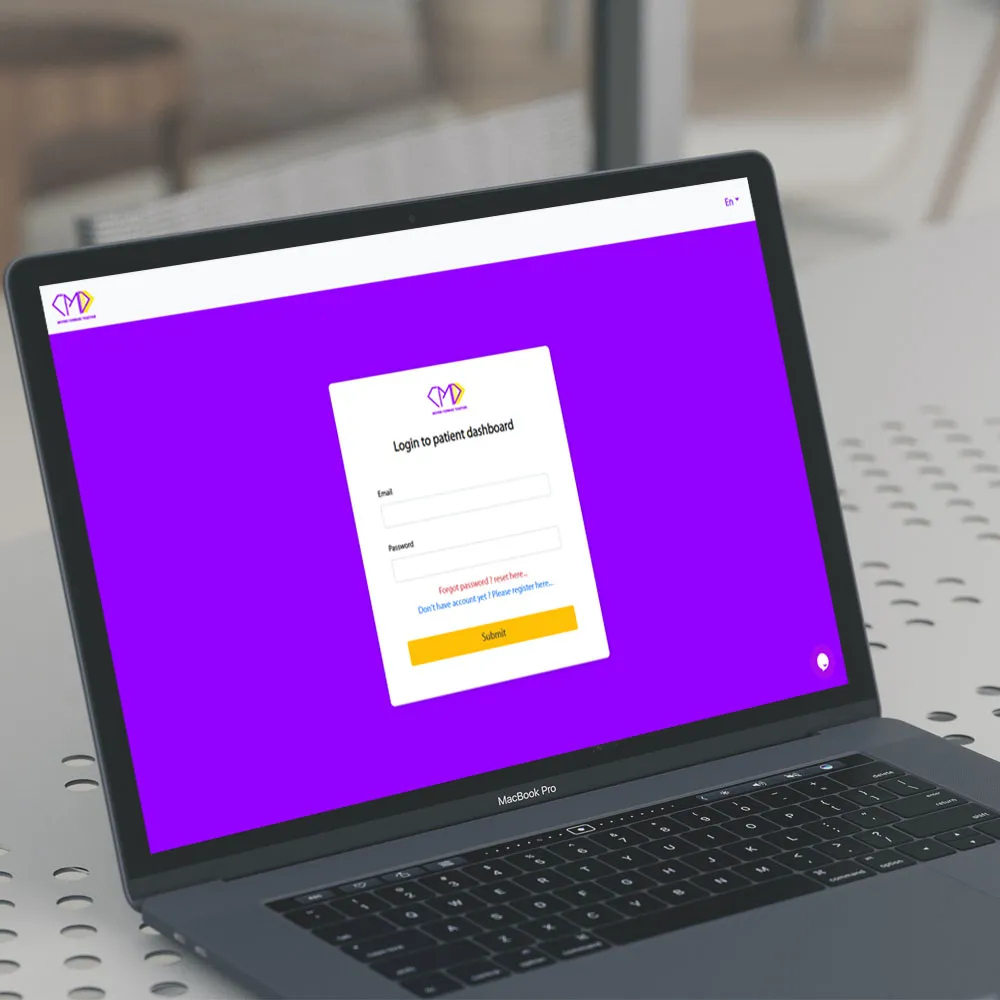




- Built for
- Technology
ReactJS | NestJS | Postgres | Docker | AWS
- Industry
Healthcare
- Country
Columbia
Introduction
CMD is a group of Medical Doctors certified by the Department of Health, and are passionate about promoting the benefits of medical cannabis, and helping eligible patients obtain their medical cannabis treatments.
The web application developed aims to revolutionize the medical evaluation process by providing a user-friendly and efficient platform. This case study showcases the successful implementation of the application and its impact on improving patient experiences and healthcare outcomes. The development was driven by the need to address the limitations of manual paperwork, communication delays, and potential errors in the conventional evaluation process.
Problem Identification
Traditional medical evaluations often involve cumbersome paperwork, which can lead to inefficiencies, delays, and errors. Communication between patients, doctors, and administrators may be challenging, resulting in a fragmented evaluation process. To overcome these issues, a modernized digital solution was needed to streamline and automate evaluations, improving overall efficiency and patient satisfaction.
Objectives and Target Users
The primary objectives of the web application include:
- Empowering patients to easily register, upload relevant documents, and make payments.
- Streamlining the assignment of dedicated doctors or doctor's PAs to each patient for personalized evaluation.
- Establishing seamless communication channels among patients, doctors, PAs, and administrators.
- Enhancing the efficiency of the evaluation process, reducing paperwork and improving productivity.
- Enabling seamless data submission to Futucare upon successful evaluation.
The target users of the application are:
- Patients seeking medical evaluations.
- Doctors responsible for evaluating patients' medical conditions.
- Doctor's PAs who assist doctors in the evaluation process.
- Administrators who manage the assignment of doctors and PAs to patients.
Features and Functionalities
The web application offers several key features and functionalities, including:
- User-friendly registration and profile management for patients, facilitating a smooth onboarding process.
- Secure document upload and storage for patients to securely submit their relevant medical records.
- Integrated payment gateway for convenient and secure transactions related to the evaluation process.
- A comprehensive dashboard for administrators to efficiently assign doctors or doctor's PAs to patients.
- Real-time communication channels, such as messaging or video conferencing, to foster collaboration among users.
- Seamless integration with Futucare, allowing for the effortless submission of patient data upon successful evaluation.
Development and Testing
The web application was developed using a modern technology stack, including Nest, React, Docker, and Postgres. The Nest framework was leveraged to build a robust backend infrastructure, ensuring scalability and maintainability. React was used to create an intuitive and user-friendly frontend interface, enhancing the overall user experience. Docker was employed for containerization, simplifying deployment and ensuring consistency across different environments. Postgres database was utilized to securely store and manage data with reliability and efficiency. Thorough testing was conducted throughout the development process to ensure functionality, security, and performance.
Challenges and Solutions
During the development and deployment phases, several challenges were encountered. These challenges included integrating multiple systems, ensuring data security and privacy, and achieving seamless communication among users. To overcome these challenges, close collaboration with stakeholders and healthcare professionals was crucial. Regular feedback loops, extensive testing, and continuous improvements helped address the challenges and ensure a successful implementation.
Results and Outcomes
The web application demonstrated significant positive results and outcomes, including:
- Improved efficiency by reducing paperwork and minimizing manual errors in the evaluation process.
- Enhanced communication and collaboration among patients, doctors, PAs, and administrators, leading to better healthcare outcomes.
- Streamlined assignment of doctors and PAs based on workload and expertise, ensuring personalized evaluations.
- Reduced evaluation time, resulting in faster turnaround for patients and improved satisfaction.
- Successful integration with Futucare, enabling seamless and secure submission of patient data for further analysis and insights.
Impact Measurement and Recommendations
The impact and effectiveness of the web application were measured through user feedback, data analysis, and performance metrics. Valuable insights were gained from user feedback, data analysis, and performance metrics. User satisfaction surveys and testimonials indicated a positive response to the user-friendly interface, streamlined process, and improved communication. Data analysis showcased a reduction in evaluation time, improved assignment efficiency, and increased productivity.
Based on the outcomes and measurements, several recommendations for future improvements and enhancements can be made:
- Continuously gather user feedback to identify areas for further improvement and optimize the user experience.
- Enhance the communication features to facilitate seamless collaboration between users, such as real-time notifications and improved messaging capabilities.
- Explore the integration of additional healthcare systems or tools to further streamline the evaluation process and improve data exchange.
- Invest in advanced data analytics and reporting capabilities to derive meaningful insights from the collected data, aiding in decision-making and process optimization.
- Prioritize data security and privacy by implementing robust encryption measures and adhering to relevant compliance standards.
- Conduct regular performance monitoring and optimization to ensure the application's stability, scalability, and responsiveness.
Furthermore, conducting training sessions and workshops for users to familiarize themselves with the web application's features and functionalities would promote adoption and maximize its benefits. Collaborating with healthcare professionals and administrators to refine the evaluation workflows based on their expertise and insights would also contribute to ongoing enhancements.
Conclusion
In conclusion, the development of the user-friendly web application for medical evaluations using Nest, React, Docker, and Postgres has successfully transformed the traditional evaluation process. Through improved efficiency, streamlined communication, and enhanced collaboration, the application has had a positive impact on patient experiences and healthcare outcomes. The measured results and user feedback validate the effectiveness of the application in meeting its objectives.
The case study emphasizes the importance of user-centric design, thorough testing, and continuous improvement in the development process. It also highlights the significance of collaborative efforts, stakeholder engagement, and the integration of advanced technologies in driving innovation in the healthcare industry.
Moving forward, the web application holds great potential for scalability, further advancements, and wider adoption within the healthcare sector. By leveraging the lessons learned and implementing the recommendations, the application can continue to revolutionize medical evaluations, improve patient care, and contribute to the overall advancement of the healthcare industry.